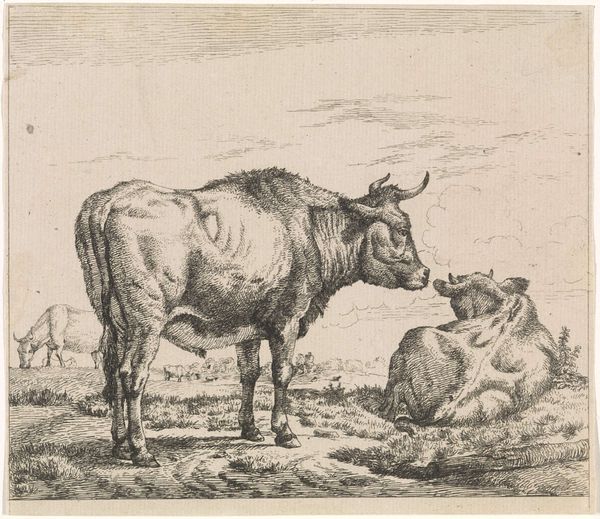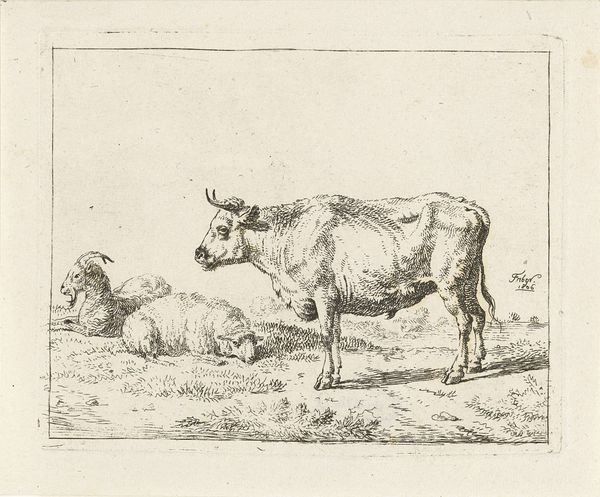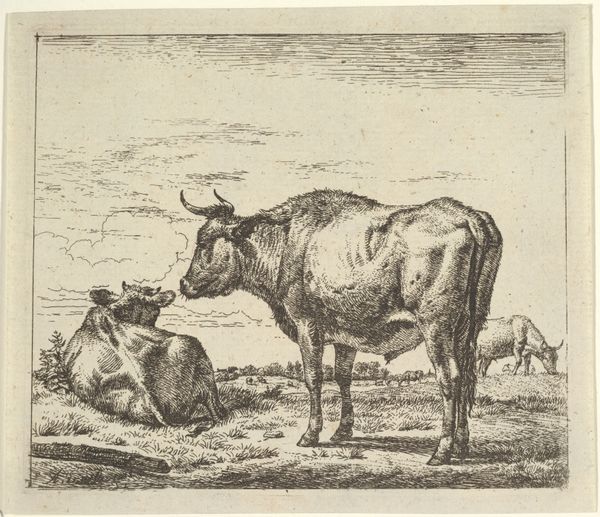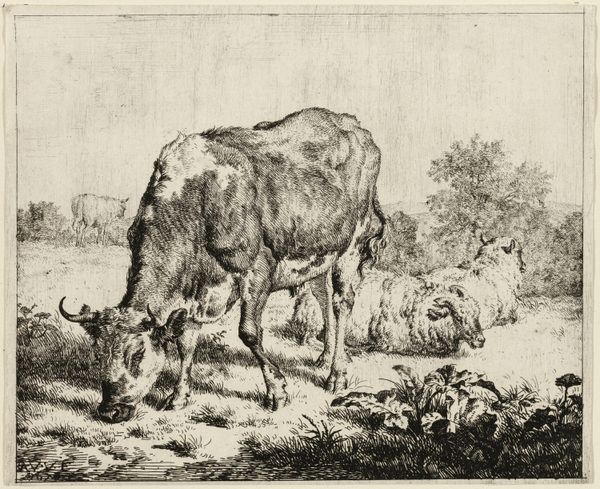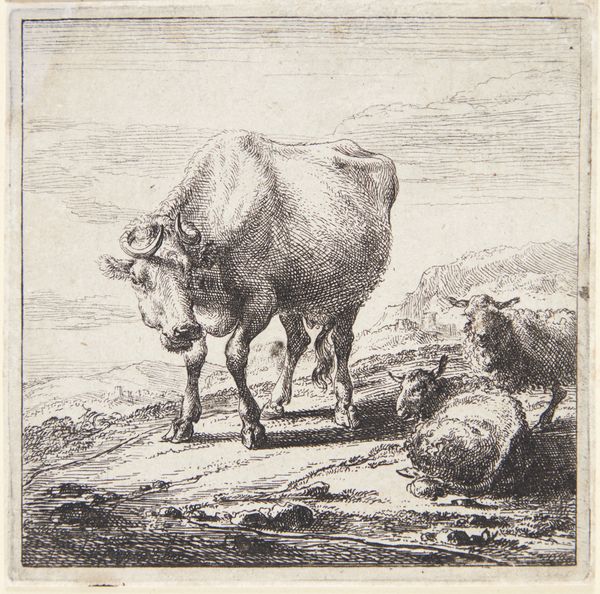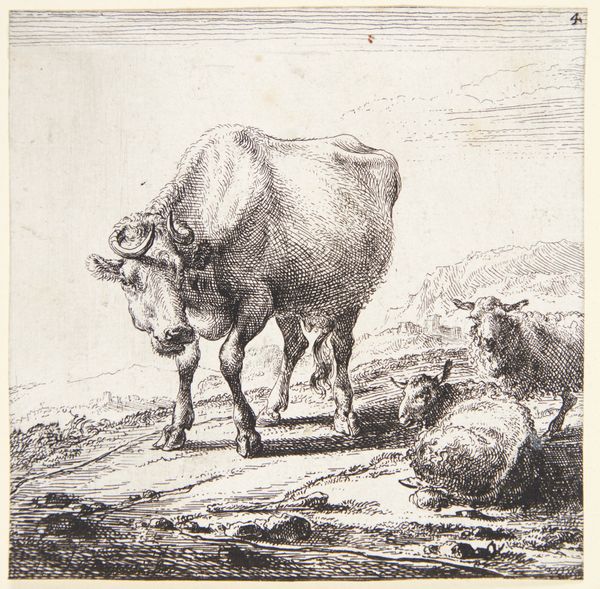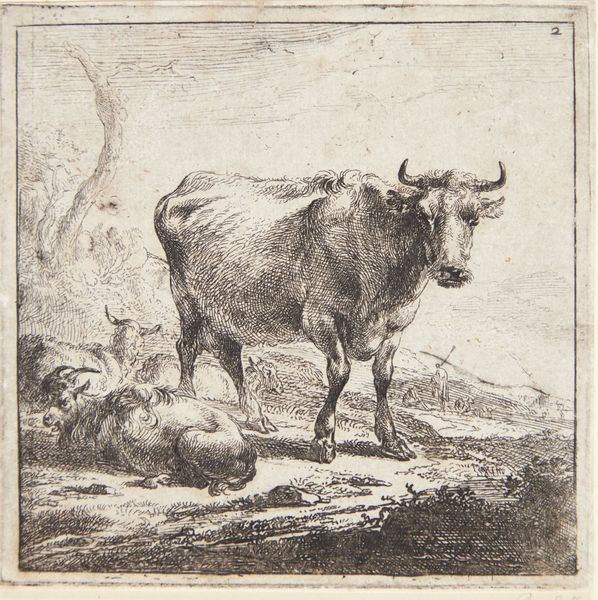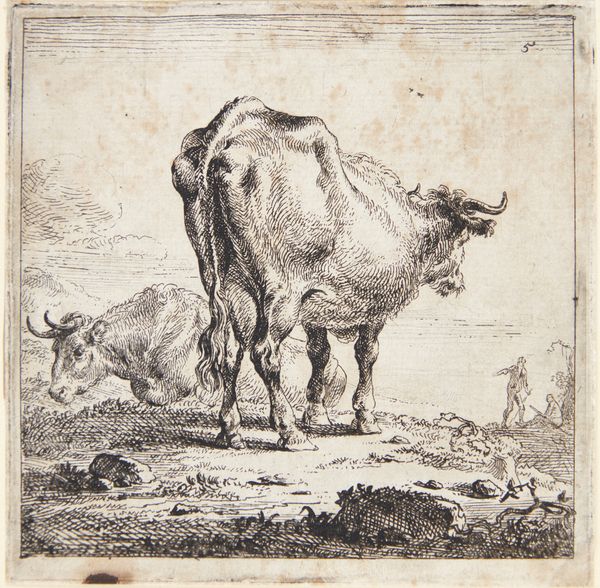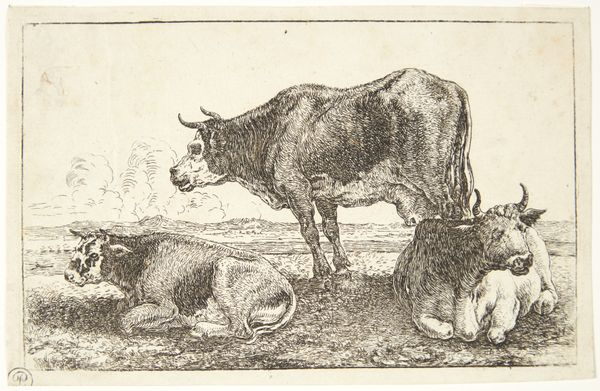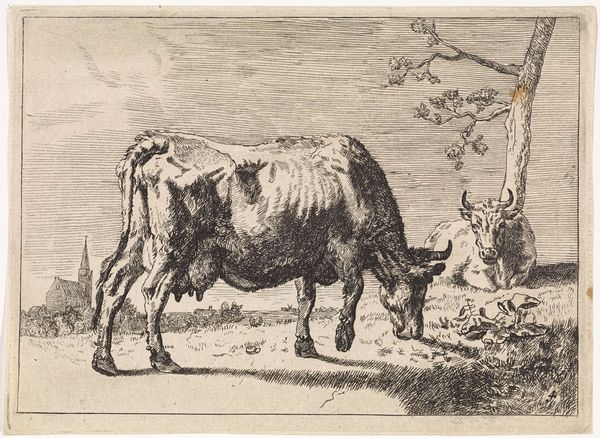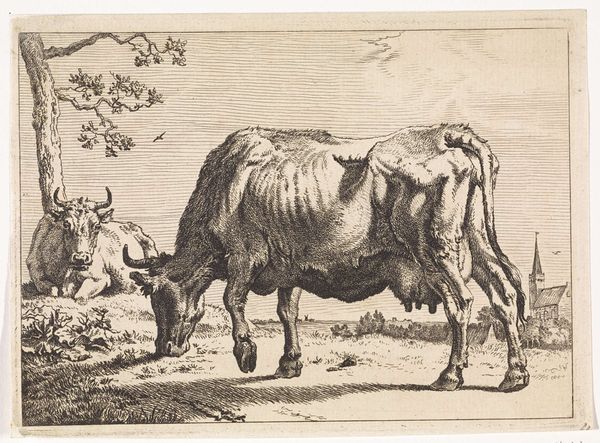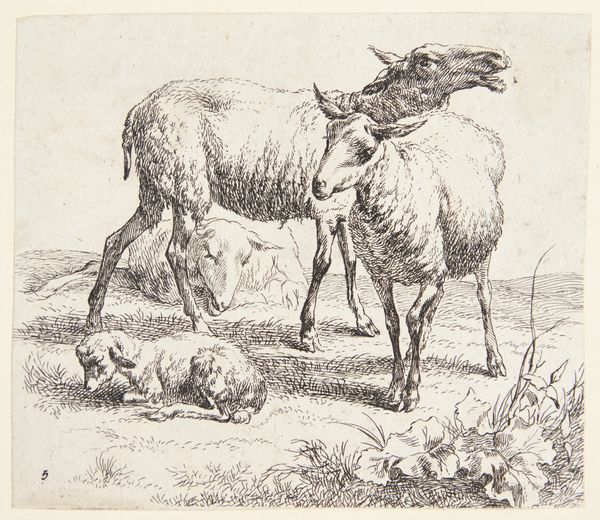
print, etching
#
baroque
# print
#
etching
#
landscape
#
figuration
#
realism
Dimensions: 96 mm (height) x 94 mm (width) (plademaal)
Curator: What immediately strikes me is the density of lines creating such detail in the standing cow in this etching. The landscape almost fades into the background by comparison. Editor: Indeed. This print, "Standing Cow and a Lying Sheep," created by Nicolaes Berchem in 1644, does have a remarkable textural richness achieved through etching. You can see the meticulous rendering of the animals against the hazy landscape, reflecting a larger cultural interest in agrarian life and landscape as suitable subject matter at the time. Curator: And observe how Berchem employs varied hatching techniques, from light touches in the distant sky to heavier cross-hatching that models the robust form of the cow. There is a tonal drama created despite its modest scale. Editor: It is worth considering the rising status of the Dutch Republic, whose economic stability helped support art markets, and an increase of art depicting such common barnyard animal, making Berchem able to find ready patronage for prints like this. This contributed to new cultural understandings about both the status of these animals and that of farm land in the shaping of Dutch society. Curator: A bone lies abandoned in the lower part of the image plane. It lends a subtle sense of depth to the overall picture—even a little foreshadowing and reminder of mortality and the food chain. Editor: Such details offered accessible narratives for the middle-class collector who found these scenes reflecting their growing cultural awareness and aspiration. It's intriguing how these works elevated the everyday. Curator: Seeing this has provided new perspective; I was so caught up with formal concerns like shading that I neglected the historical and societal influence on it! Editor: And by examining such historical aspects of the culture, you also made me look much closer and truly take in all of Berchem's technique, which can often get lost in broader cultural readings.
Comments
No comments
Be the first to comment and join the conversation on the ultimate creative platform.
